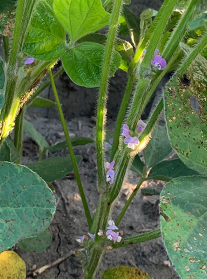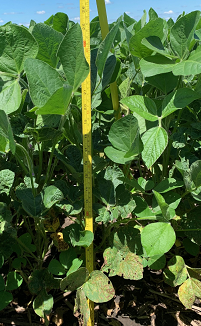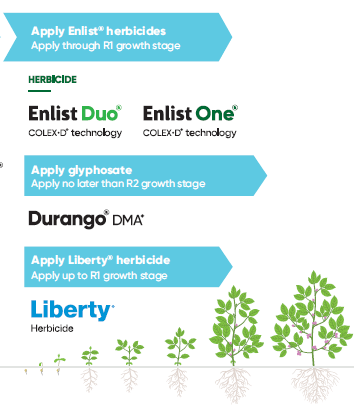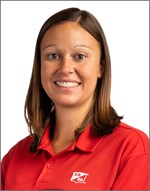Agronomic Reasons for Using Fungicide on Corn; Soybeans Reaching Full Bloom Stage; Enlist E3® Soybean Herbicide Considerations
BY Dairyland Seed Agronomy Team
Corn Tasseling and Fungicide
Receiving moisture just prior to and during pollination, accompanied with moderate temperatures, increases the probability of having a successful pollination period. If history (50+ years) is an indicator, the likelihood of receiving rainfall from July 15 to 20 is 80 percent or more. This timeframe usually coincides with a few county fairs or community celebrations and, in most years, we normally receive rainfall to some degree during this time.
As we start seeing more moisture in the form of rainfall or from heavy dews in the morning, we increase the probability of seeing diseases like Rusts, Common Eye Spot, Northern Corn Leaf Blight (NCLB) as well as Gray Leaf Spot (GLS) in areas.
One of the concerns I have for this growing season, as well as the past few years, is with all the compaction that we have had in many of our soils from the last few harvest seasons (combines, grain carts, grain trucks) or spring equipment patterns and tillage from both spring and fall. This layer of compaction is a yield limiting factor in the plants’ ability to access water and nutrients below the top 6 to 12 inches of soil. With as dry as our soils has been, some of these compaction areas should be lessened.
When you combine compaction issues with disease, you have effectively created a 1-2 punch that could be very yield limiting, especially if we continue to be hot and dry later in the growing season. I have and do recommend quality fungicides being applied at tassel time coupled with a high value nutrient pak. Factors that I consider prior to putting a fungicide on would be:
- Do we have a disease present at treatable levels?
- Do we have a yield potential that could utilize a fungicide?
- Is it a Corn-on-Corn field?
- Does the hybrid or its genetic background show a ROI to fungicide?
The agronomic reason for suggesting a fungicide and nutrient pak is this: once a corn plant silks/tassels (R1) it ceases to have root growth. This, coupled with compaction layers from previous years, will, hamper the plants’ ability to access water and nutrients. In my experience, a quality fungicide that has multiple modes/sites of action “tricks” the plant into becoming more water and nutrient efficient. This, again, in my experience, is above and beyond disease control. When spraying a fungicide, make sure to use adjuvants that do not contain Nonylphenol Ethoxylates (NPE). Products that contain NPE are more likely to cause Arrested Ear Syndrome (Beer Bottle Ears) when sprayed at or near tasseling.
Once we hit R1 on a corn plant, the corn is as tall as it will get. The root system growth is finalized as well. With that, any nutrients that the plant will utilize need to be near the roots or move to the roots or be taken in through the leaf surface. Potassium uptake is slowed and virtually complete, while Nitrogen, Phosphorous as well as a few others are in high gear. Taking a tissue sample at this stage to validate your current fertility program or look to potential changes in your program for upcoming growing season is strongly suggested.
SOYBEAN DEVELOPMENT – FULL BLOOM
Once a soybean plant reaches Full Bloom or R2 it has reached about 50 percent of its total height and has produced about 50 percent of its total number of mature node numbers. At Full Bloom the soybean plant has accumulated about 25 percent of its mature dry weight and nutrients. Full Bloom is also the start of the plant rapidly moving dry matter and nutrients into the vegetative portions of the plant such as leaves, stems and roots. This accumulation of dry matter and nutrients will shift to pods (R3) and seeds (R5) as they start to develop. This rapid movement of nutrients above ground is at the same time the nodules below ground start to quickly increase nitrogen fixation.


As soybeans start to flower and enter Full Bloom (R2), the rapid uptake of potassium (K) and nitrogen (N) is starting. At R2 soybean plants have taken up 15 percent of the N and K needs for the year, and by early to mid-August, when soybean plants have reached Beginning Seed stage (R5), they will have taken up 70 to 75 percent of the N an K needs for the growing season. The implication of not having enough nutrients available to the plant now will become more visible in the near future. Taking a tissue sample at this stage will help plan for that field’s fertility needs in the future.
Soybean plants will put on vegetative (V) and reproductive (R) growth at the same time. Peak flowering occurs at Beginning Pod Development (R3), with flowering continuing until Beginning Seed (R5) or shortly thereafter. Not every flower or blossom will produce a pod. In fact, it is not unusual for soybeans to abort 50 to 70 percent of its flowers. The importance of this is that the more flowers you have or save, the more potential pods and seeds you can have. With that being said, in theory, if you can ease the stress soybeans experience during the early reproductive phases, you increase the probability of more pods and more beans. There has been much research on this with some success. The take-home statement is, if you are looking at a time period to feed the soybean crop with nutrients or apply a PGR type of product, now would be the time to look at it.
ENLIST E3® SOYBEAN HERBICIDE CONSIDERATIONS
As soybeans begin reproductive stages (R1, R2) post emergent herbicide applications are taking place. It is important to note specific application timing information for the Enlist™ weed control system as shown in the attached diagram. The following are some points to consider while making herbicide applications on Enlist E3® soybeans.
- R1 is defined by Purdue University as “Open flower at any node on the main stem”. This is also known as beginning flower.
- R2 is defined by Purdue University as “Open flower at one of the two uppermost nodes on the main stem with a fully developed leaf”. This is also known as full flower. A leaf is considered fully developed when the leaf margins are no longer touching.
- Applications made now can be a great time to bolster soil residual herbicide programs to help suppress or control flushes of problematic weed such as pigweed species, ragweeds, and grasses.
- Make note of any escapes or weeds not controlled by current burn down and residual programs. This information is crucial when building chemical recommendations for the future.
- Follow all label reconditions regarding application method, timing and adjuvant use. If you have any questions contact your Dairyland Seed DSM or Regional Agronomist for more information.

 |
 |
 |
 |
 |
| Brian Weller Western Region 507.456.3034 |
Dan Ritter Central Region 219.863.0583 |
Branden Furseth Northern Region 608.513.4265 |
Mark Gibson Eastern Region 260.330.8968 |
Amanda Goffnett Eastern Region 989.400.3793 |
